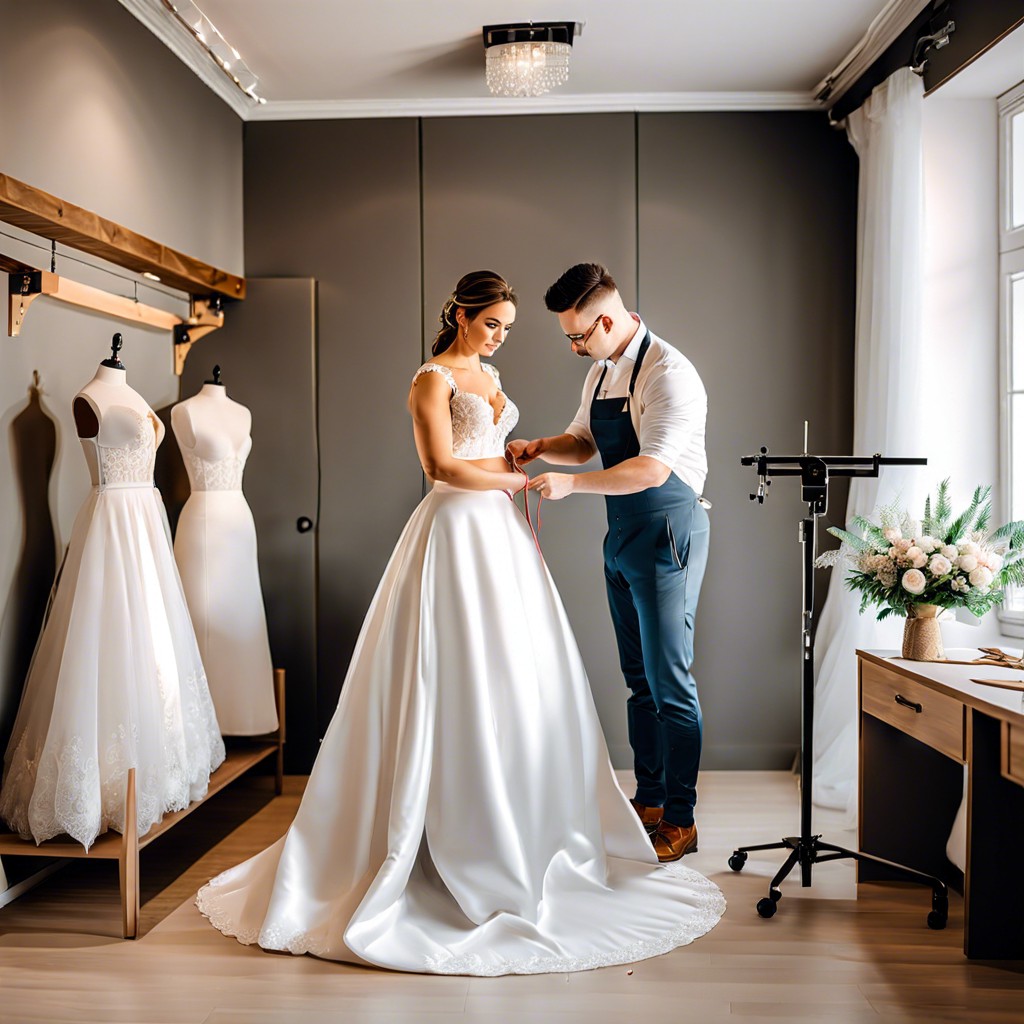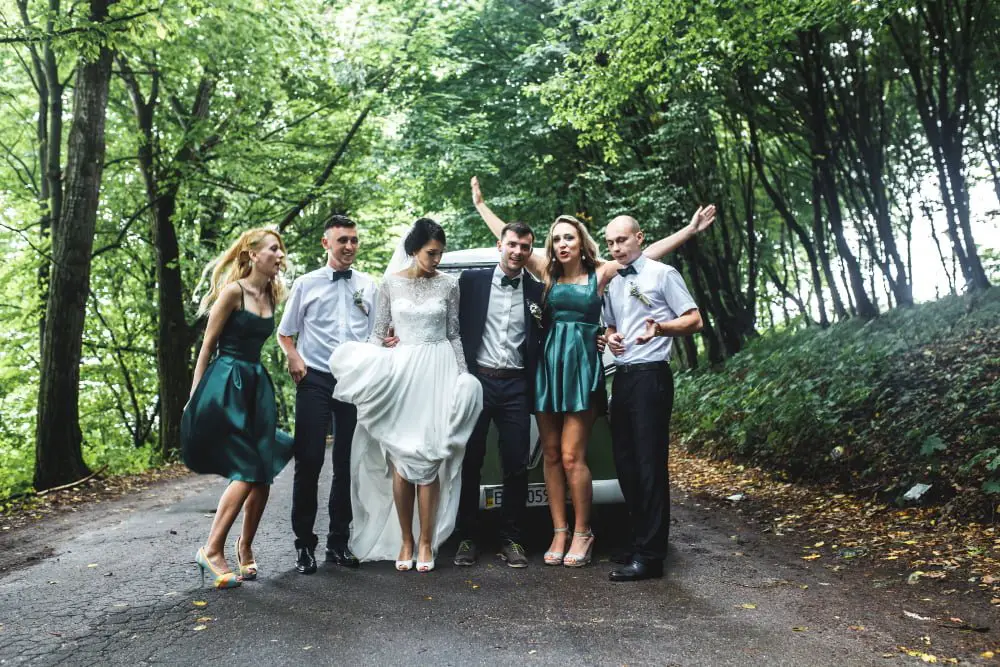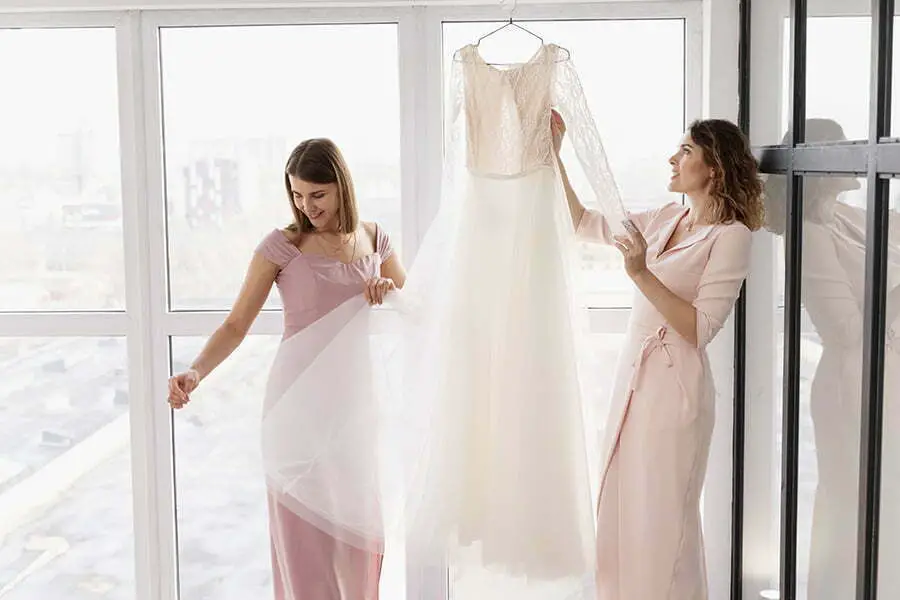Learn how to craft a wedding dress step-by-step, from selecting fabrics to the final stitches.
Key takeaways:
- Accurate measurements are crucial for a well-fitting wedding dress.
- Select high-quality materials that suit the season and style.
- Choose the right pattern and sew with patience and precision.
- Consider factors that influence the cost of a custom dress.
- Start the process at least six to nine months before the wedding.
Taking Measurements

Accurate measurements are the foundation of a well-fitting wedding dress. Begin by measuring the bust, waist, and hips. Use a soft measuring tape and wear minimal clothing for precision. Always have someone else help with this step to avoid errors.
Additionally, consider the length of the dress and the neckline, as well as your sleeve length if you’re opting for sleeves. Each dimension will play a critical role in the overall fit and look of your gown.
Record these measurements clearly and double-check them. A small mistake can lead to big fitting issues later, which might be costly and time-consuming to rectify.
Choosing High-Quality Materials and Fabrics
Selecting the right materials is crucial for both the appearance and comfort of your wedding dress. Silks and satins provide a luxurious sheen and drape beautifully but can be expensive. For a softer, more romantic look, consider chiffon or tulle, which are lighter and great for flowing designs.
Keep in mind the season of your wedding; lightweight fabrics like cotton blends are perfect for summer, while velvet or brocade might be better suited for winter ceremonies. Fabric quality significantly affects how well the dress fits and moves with you, so it’s worth investing in the best you can afford.
Additionally, think about the texture and details. Lace adds a classic touch and can be used for intricate patterns. If you desire a bit of shimmer, look for embellished fabrics with beads or sequins. Each fabric carries its own character and will influence the overall feel of your attire, making your choice pivotal in bringing your dream dress to life.
Choosing Your Pattern and Sewing Your Dress
Selecting the right pattern is crucial; decide whether to modify an existing design or start from scratch for a perfect fit. Once chosen, lay out your fabric on a flat surface, align the pattern pieces according to the grain line, and secure them with pins. Cutting accurately ensures the pieces assemble neatly.
Sewing begins with the larger sections, such as the bodice and skirt, before moving on to more intricate details like sleeves or embellishments. Regularly fitting the dress during the sewing process allows adjustments for a better fit. Employing a variety of stitches and perhaps even hand-sewing techniques will contribute to the overall durability and beauty of the gown.
Patience and precision during this phase pay off, resulting in a dress that looks professional and feels comfortable.
The Cost of Creating a Custom Wedding Dress
The price of a custom wedding dress can be influenced by several factors. Choosing luxurious fabrics such as silk or intricate lace patterns typically drives up the cost. The complexity of the design also plays a role; for example, detailed embroidery or extensive beading will require more hours of labor, increasing the price.
Don’t forget about the fees for the dressmaker or designer. Highly experienced tailors or popular designers will often command a higher rate.
Lastly, the timeline can impact the cost. A dress needed in a hurry may incur rush fees if it requires prioritizing over other projects.
By understanding these variables, you can better manage your budget while achieving the dream look for your big day.
The Timeline for Creating a Custom Wedding Dress
Creating a custom wedding dress typically requires a substantial period for completion. It’s essential to start this process at least six to nine months before your wedding day. This timeline allows for several crucial steps: design consultations, multiple fittings, and the intricate sewing and detailing phase.
Early engagement with a dressmaker is crucial to accommodate any unexpected delays, such as alterations or last-minute design changes. Plan for at least three fittings throughout the creation of your dress to ensure the fit is exactly as envisioned. These sessions usually spread across the timeline, with the final fitting scheduled close to the wedding date to account for any body changes.
Remember, the more complex your dress design (think lace detailing, hand embroidery, or custom embellishments), the longer it may take to complete. Open communication with your designer is key to keeping everything on track and stress-free.
Keep reading:





